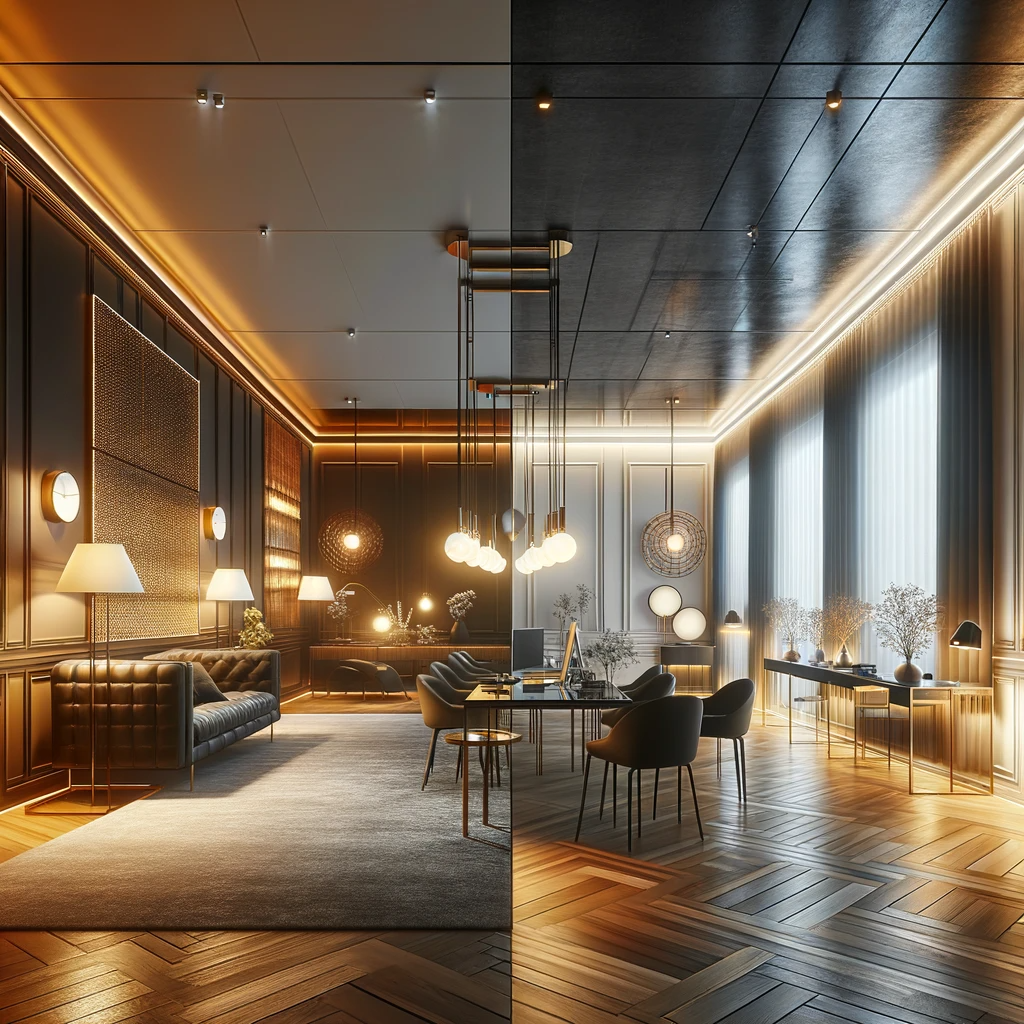
The Symphony of Light: Lamp Shades and Their Transformation of Spaces
Title: The Symphony of Light: Lamp Shades and Their Transformation of Spaces
Introduction: Light is more than a mere functional element in our spaces; it is a transformative force that defines the atmosphere and character of an environment. In this article, we will explore the different shades of light emitted by lamps throughout history and how they have radically changed the spaces we inhabit.
Chapter 1: The Spectrum of Light - Understanding Shades
Light can be described in terms of color temperature, measured in degrees Kelvin (K). Warm tones, like amber and soft yellow, create inviting atmospheres and are typically in the range of 2700K to 3000K. Neutral tones offer more natural white light, ideal for kitchens and offices, positioned around 4000K. Cool tones, like light blue, stimulate concentration and are common in workspaces, with temperatures above 5000K.
Chapter 2: An Illuminated History - The Evolution of Lamp Shades
From the warm flames of torches and candles to modern LEDs, the history of lighting is a testament to human innovation. Thomas Edison’s invention of the incandescent bulb brought soft, warm light. Over time, fluorescent technology and later LEDs expanded the spectrum of available shades, allowing unprecedented customization of environments.
Chapter 3: Environments Shaped by Light - The Impact of Shades on Spaces
The shade of light can significantly alter the perception of a space. Warm tones are often used in living rooms and bedrooms, promoting relaxation and comfort. Neutral and cool tones, on the other hand, are ideal for offices and study areas, as they enhance concentration and reduce eye strain.
Chapter 4: Light in Interior Design - Strategies and Trends
Interior designers use light shades as tools to transform spaces. Warm lighting can highlight warm colors and textures, while cool light can make spaces feel more open and clean. Current trends favor flexibility, with lighting systems that can adjust shades based on the time of day or activity.
Chapter 5: Technology and the Future - Towards Smarter Lighting
Lighting technology continues to evolve, with smart lamps allowing users to control the shade and intensity of light from their devices. In the future, we can expect even more advanced lighting systems, capable of automatically adapting to our needs and circadian rhythms.
Conclusion: Light, in its various shades, has the power to completely transform a space, influencing our mood, well-being, and productivity. By choosing the right lighting, we illuminate an area and also create an environment that reflects and enhances our life experience.
